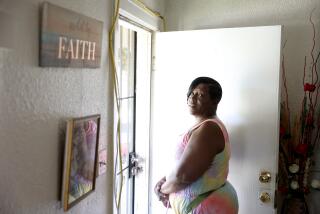Spreading Hope and Homes From State to State
CARNEGIE, Pa. — Skinny and quiet, Timothy Mancini was a neglected addition to the foster-care system three years ago.
Now he’s 8 years old, and he isn’t so skinny. He’s more talkative. And, not coincidentally, he has parents, Linda and John Mancini of Carnegie, Pa.
Thanks to pioneering improvements in the adoption and foster-care system locally, Timothy waited less than a year for a family after social workers determined that he could be adopted. The customary wait was five years.
“I was at the right place at the right time,” Linda Mancini said. “There was a change in the system that was long overdue.”
Allegheny County, which includes Carnegie and Pittsburgh, is one of a handful of jurisdictions around the country mandated to expedite adoptions of foster children.
Some of their programs will serve as models later this year when, under a new federal law, all states are required to establish new adoption policies for children in foster care.
“Everyone agreed that the system was broken,” said Kathleen Hayes, director of an adoption program in Columbia, S.C. “We could not agree on where to go from there.”
Over the decades, foster care evolved from a temporary solution to a permanent, overburdened system. Children spent years, sometimes their entire childhood, bouncing from one family to another. Even those legally eligible for adoption often waited five years or longer.
To be legally adoptable, a child’s parents either surrender their parental rights or a court system orders their rights severed.
“Nobody had ever bothered to keep track of the kids,” said Joan Wagnon, mayor of Topeka, Kan., who led successful reform efforts in Kansas.
The North American Council of Adoptable Children estimates 500,000 foster children exist, double the figure of 16 years ago. But the number is uncertain since there’s no requirement for states to report statistics to the government’s National Adoption Information Clearinghouse, and only 31 do so.
Now the push is to return foster care to its original mission: stopgap housing for at-risk children.
The Adoption and Safe Families Act of 1997, signed by President Clinton in November, is a mandate to states to prevent children from floating among foster families for years at a time.
Under the law, states must keep track of children and decide within 15 months of placement in foster care whether they will go home, be adopted or be placed with a long-term foster family.
Allegheny County, which attacked its maligned adoption and foster-care system two years ago, recently announced a record number of foster children adopted in 1997. Compared with the 100 or fewer adoptions each year before 1993, last year there were 344, including Timothy.
To speed the sluggish system, the county hired more caseworkers, consolidated the multiple courts that once handled adoptions and asked a Pittsburgh law firm to volunteer time for the paperwork necessary to sever parental rights.
Other states and counties that have implemented similar changes are seeing similar results.
“Kansas was ready,” said Wagnon, the Topeka mayor. “Kellogg gave us the tools.”
She referred to an influential effort launched by the Kellogg Foundation in 1990 to underwrite pilot foster-care reform projects. In all, 11 states and communities received $42 million from the foundation created in 1930 by breakfast cereal magnate W.K. Kellogg.
Simple goals were laid out, said Valora Washington, director of Kellogg Families for Kids. Among them: that one team of social workers makes one assessment to determine each child’s future, that workers permanently place children within a year, that no child stays in more than one foster home, and that families get support after adoptions.
States winning Kellogg funding were Kansas, Massachusetts, Mississippi, Montana, North Carolina, South Carolina and Washington. Other jurisdictions receiving funds: New York City; Pima County, Ariz.; Kent County, Mich.; and nine counties in northeast Ohio.
“We told people . . . they needed to work together,” Washington said. “We needed strong communities that were serious about change and state systems willing to look at themselves.”
Starting in 1994, Kansas turned its system over to private agencies. Wendy’s, the fast-food chain, stepped in as a corporate sponsor, and the state contracted with Lutheran Social Service of Kansas and Oklahoma to take charge.
For children awaiting adoption, the state created a computerized registry with photographs and profiles and publicized adoptable children in newspapers and on television. It expanded counseling and support services for adoptive families.
“When you have the money to talk adoption, people came to the table,” Wagnon said.
Since reforms were implemented in 1994, adoptions in Kansas have steadily increased--from 247 in 1994 to 421 in 1997.
Other changes were also dramatic.
Washington state cleaned up record-keeping after finding the system had far more children than anyone realized. It formed a partnership with several private child-advocacy organizations, hired more social workers and revamped court hearings to streamline processing.
“When we’re all mobilized, your accountability soars,” said Marie Jamieson, who led reform efforts. She is project director of the Children’s Home Society of Washington in Seattle.
Of 1,400 foster children available for adoption in Washington, more than 500 were adopted in the first nine months of 1997--40 more than in all of 1996.
South Carolina attacked its slow-moving foster-care backlog by changing the way its courts worked. It reversed the old system that required adoptive parents to be found before birth parents’ rights could be terminated. Legal clerks were added to handle paperwork, and a campaign was launched to recruit adoptive parents.
The state still has a ways to go, but last year 401 of South Carolina’s 5,000 foster children were cleared for adoption, more than double the number just two years earlier.
Whether other states look to the Kellogg-funded reforms or those launched independently by others such as Allegheny County, the federal law’s requirements are expected to prompt action in many legislatures this year.
“This is a national effort to get kids out of the foster system and make it more short-term,” said Amy Thurston of the National Adoption Information Clearinghouse, based in Rockville, Md.
The Mancinis aren’t experts in foster care and adoption. All they know is that Timothy’s birth parents’ rights were severed last September, and that they officially became his parents less than two weeks later.
He no longer wakes her up several times a night to make sure she’s still there, Linda Mancini said. The second-grader is learning to ice skate, sings in the school choir and is settling into stability.
“He was a blessing for us,” she said. “There are so many out there.”
More to Read
Sign up for Essential California
The most important California stories and recommendations in your inbox every morning.
You may occasionally receive promotional content from the Los Angeles Times.










